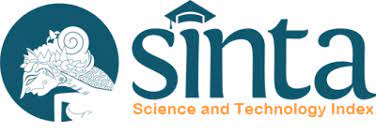Designing a User Interface for Monitoring and Evaluation (MONEV) of Learning: Focus on Preparation and Learning Processes at UPNVJ
Abstract
Studi ini bertujuan untuk merancang Dashboard User Interface (UI) yang inovatif untuk monitoring dan evaluasi pembelajaran di lingkungan Universitas Pembangunan Nasional "Veteran" Jakarta, Hasil studi ini telah menyediakan platform yang komprehensif dan sesuai bagi pengguna untuk memonitoring dan mengevaluasi kemajuan pembelajaran. Dashboard UI ini memungkinkan pengguna untuk dengan mudah mengakses dan menganalisis data terkait kinerja Dosen, mahasiswa, materi kuliah, Pengabdian kepada Masyarakat, Studi, serta umpan balik. Melalui evaluasi mockup dan pengujian prototipe, UI yang dihasilkan dapat memberikan gambaran holistik dan mendalam tentang persiapan dan proses pembelajaran. memastikan kepatuhan terhadap standar kualitas pendidikan tinggi, serta hasilnya sejalan dengan prinsip-prinsip Sistem Penjaminan Mutu Internal (SPMI), salah satunya memprioritaskan peningkatan kualitas pendidikan dan hasil secara berkelanjutan. Dashboard UI berfungsi sebagai tools yang berguna bagi pemangku kepentingan untuk membuat keputusan yang tepat, serta mengidentifikasi area yang harus diperbaiki. Tantangan implementasi dan keterbatasan dari desain ini telah teridentifikasi, dengan rekomendasi yang diusulkan. Rekomendasi untuk pengembangan lebih lanjut termasuk pembaruan desain, peningkatan fungsionalitas, dan integrasi dengan sistem lain. Hasil keseluruhan studi ini memberikan kontribusi praktis dan teoritis untuk meningkatkan manajemen pembelajaran di Universitas Pembangunan Nasional "Veteran" Jakarta serta dapat menjadi panduan pengembangan sistem informasi untuk mendukung kebijakan dan mengevaluasi pembelajaran di perguruan tinggi.
Downloads
References
Abubakari, M. S., Nurkhamid, & Hungilo, G. (2021). Evaluating an e-Learning Platform at Graduate School Based on User Experience Evaluation Technique. Journal of Physics: Conference Series, 1737(1), 012019. https://doi.org/10.1088/1742-6596/1737/1/012019
Aditya, R., Pranatawijaya, V. H., & Putra, P. B. A. A. (2021). Rancang Bangun Aplikasi Monitoring Kegiatan Menggunakan Metode Prototype. Journal of Information Technology and Computer Science, 1(1), 47–57. https://e-journal.upr.ac.id/index.php/jcoms/article/view/2955
Arifudin, D., Heryanti, L., & Pramesti, D. (2021). Pelatihan desain mockup dan logo sebagai branding produk untuk meningkatkan nilai jual bagi UMKM. JMM (Jurnal Masyarakat …. http://journal.ummat.ac.id/index.php/jmm/article/view/5304
Bae, S. W. (2012). On linear-sized farthest-color Voronoi diagrams. IEICE Transactions on Information and Systems, E95-D(3), 731–736. https://doi.org/10.1587/transinf.E95.D.731
Balaban, M., & Maraee, A. (2013). Finite satisfiability of UML class diagrams with constrained class hierarchy. ACM Transactions on Software Engineering and Methodology, 22(3), 1–42. https://doi.org/10.1145/2491509.2491518
Ben Abdessalem Karaa, W., Ben Azzouz, Z., Singh, A., Dey, N., S. Ashour, A., & Ben Ghazala, H. (2016). Automatic builder of class diagram (ABCD): an application of UML generation from functional requirements. Software - Practice and Experience, 46(11), 1443–1458. https://doi.org/10.1002/spe.2384
Borelli, E., Paolini, G., Antoniazzi, F., Barbiroli, M., Benassi, F., Chesani, F., Chiari, L., Fantini, M., Fuschini, F., Galassi, A., Giacobone, G. A., Imbesi, S., Licciardello, M., Loreti, D., Marchi, M., Masotti, D., Mello, P., Mellone, S., Mincolelli, G., … Costanzo, A. (2019). HABITAT: An IoT solution for independent elderly. Sensors (Switzerland), 19(5). https://doi.org/10.3390/s19051258
Ewell, P. T., & Jones, D. P. (1994). Data, indicators, and the national center for higher education management systems. New Directions for Institutional Research, 1994(82), 23–35. https://doi.org/10.1002/ir.37019948204
Hafsari, R., Aribe, E., & Maulana, N. (2023). Perancangan Sistem Informasi Manajemen Inventori Dan Penjualan Pada Perusahaan Pt.Inhutani V. PROSISKO: Jurnal Pengembangan Riset Dan Observasi Sistem Komputer, 10(2), 109–116. https://doi.org/10.30656/prosisko.v10i2.7001
Hwang, G. J. (2014). Definition, framework and research issues of smart learning environments - a context-aware ubiquitous learning perspective. Smart Learning Environments, 1(1), 4. https://doi.org/10.1186/s40561-014-0004-5
Iqbal, M., Marthasari, G. I., & Nuryasin, I. (2020). Penerapan Metode UCD (User Centered Design) pada Perancangan aplikasi Fitur Darurat. Jurnal Repositor, 2(8). https://doi.org/10.22219/repositor.v2i8.218
Kambow, L. (2012). Transformation of UML Class Diagram to UML Sequence Diagram. International Journal of Applied Information Systems, 2(9), 19–22. https://doi.org/10.5120/ijais12-450413
LP3M UPNVJ. (2022). SPMI UPNVJ. https://lp3m.upnvj.ac.id/spmi/
Luu, L. K., & Phan, L. (2020). The process of evaluating students based on university program learning outcomes. Vietnam Journal of Education, 4(4), 93–99. https://doi.org/10.52296/vje.2020.86
Maghfiroh, L. R. (2020). Observation and heuristics evaluation of student web-based application of SIPADU-STIS. Journal of Physics: Conference Series, 1511(1), 012019. https://doi.org/10.1088/1742-6596/1511/1/012019
Mahmud, U. (2015). UML based Model of a Context Aware System. International Journal of Advanced Pervasive and Ubiquitous Computing, 7(1), 1–16. https://doi.org/10.4018/ijapuc.2015010101
Maulachela, A. B., Abdurahim, A., Qudsi, J., & Tajuddin, M. (2021). Performance Dashboard Sebagai Visualisasi Evaluasi Diri Perguruan Tinggi Menggunakan Pendekatan User-Centric. JTIM : Jurnal Teknologi Informasi Dan Multimedia, 3(3), 144–151. https://doi.org/10.35746/jtim.v3i3.162
Munawar, Z., Kom, M., Fudsyi, M. I., & Musadad, D. Z. (2019). Perancangan Interface Aplikasi Pencatatan Persediaan Barang Di Kios Buku Palasari Bandung Dengan Metode User Centered Design Menggunakan Balsamiq Mockups. Jurnal Informatika - COMPUTING, 06(2), 12–13. https://www.ejournal.unibba.ac.id/index.php/computing/article/view/199
Nanthaamornphong, A., & Leatongkam, A. (2019). Extended ForUML for Automatic Generation of UML Sequence Diagrams from Object-Oriented Fortran. Scientific Programming, 2019, 1–22. https://doi.org/10.1155/2019/2542686
Nasution, W. S. L., & Nusa, P. (2021). UI/UX Design Web-Based Learning Application Using Design Thinking Method. ARRUS Journal of Engineering and Technology, 1(1), 18–27. https://doi.org/10.35877/jetech532
Osman, M. H., Chaudron, M. R. V., & Van Der Putten, P. (2013). An analysis of machine learning algorithms for condensing reverse engineered class diagrams. IEEE International Conference on Software Maintenance, ICSM, 140–149. https://doi.org/10.1109/ICSM.2013.25
Putra, M. G. L., & Octantia, H. (2021). Analisis dan Perencangan Aplikasi E-Learning Berbasis Gamification (Studi Kasus Program Studi Sistem Informasi Institut Teknologi Kalimantan). In Jurnal Teknologi Informasi dan Ilmu Komputer (Vol. 8, Issue 3, pp. 571–578). researchgate.net. https://doi.org/10.25126/jtiik.2021834368
Sejans, J., & Nikiforova, O. (2012). Problems and Perspectives of Code Generation from UML Class Diagram. Scientific Journal of Riga Technical University. Computer Sciences, 44(1), 75–84. https://doi.org/10.2478/v10143-011-0024-3
Shcherban, S., Liang, P., Li, Z., & Yang, C. (2021). Multiclass classification of four types of UML diagrams from images using deep learning. Proceedings of the International Conference on Software Engineering and Knowledge Engineering, SEKE, 2021-July, 57–62. https://doi.org/10.18293/SEKE2021-185
Siregar, W., Irvan, I., & Rahayu, E. (2020). Sistem Informasi Pembayaran Iuran Keamanan Dan Kebersihan Pada Perumahan Berbasis Website Menggunakan Metode Design Thinking. JiTEKH, 8(2), 50–58. https://doi.org/10.35447/jitekh.v8i2.204
Soewardi, H., & Ramadhan, M. H. (2020). Usability Analysis of an Academic Faculty Website: A Case Study of the Selected University. IOP Conference Series: Materials Science and Engineering, 722(1), 012020. https://doi.org/10.1088/1757-899X/722/1/012020
Sulaiman, N., Ahmad, S. S. S., & Ahmad, S. (2019). Logical approach: Consistency rules between activity diagram and class diagram. International Journal on Advanced Science, Engineering and Information Technology, 9(2), 552–559. https://doi.org/10.18517/ijaseit.9.1.7581
Sumbawati, M. S., Hariyati, Kartini, U. T., Sukartiningsih, W., Azhiimah, A. N., & Khotimah, K. (2020). Monitoring and Evaluating Online Learning Using Online Media. Proceedings of the 2nd International Conference Innovation in Education (ICoIE 2020). https://doi.org/10.2991/assehr.k.201209.207
U.S. Department of Health & Human Services. (2014). User-Centered Design Process Map. Usability.Gov. http://www.usability.gov/how-to-and-tools/resources/ucd-map.html
UPNVJ. (2019). Visi dan Misi UPNVJ. Upnvj. https://www.upnvj.ac.id/id/tentang-upn/visi-dan-misi.html
Usability.gov. (n.d.). User-Centered Design Basics. Usability.Gov. Retrieved January 22, 2024, from https://www.usability.gov/what-and-why/user-centered-design.html
Wang, S., Bolling, K., Mao, W., Reichstadt, J., Jeste, D., Kim, H. C., & Nebeker, C. (2019). Technology to support aging in place: older adults’ perspectives. Healthcare (Switzerland), 7(2). https://doi.org/10.3390/healthcare7020060










